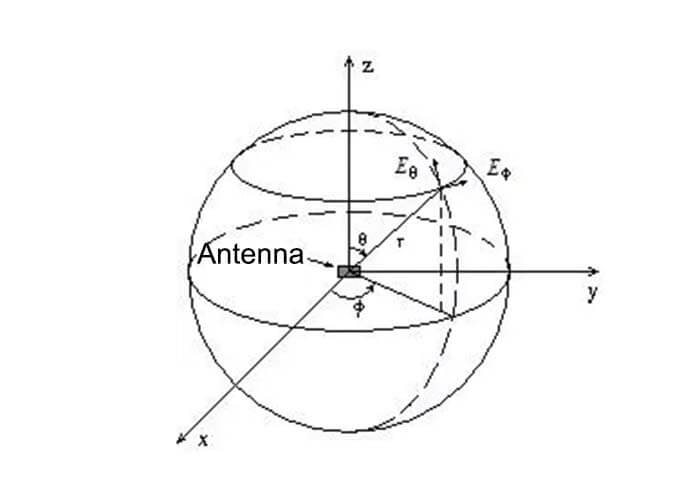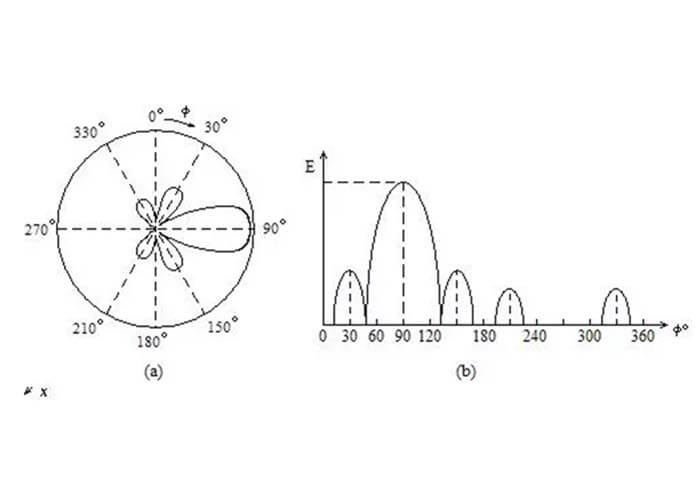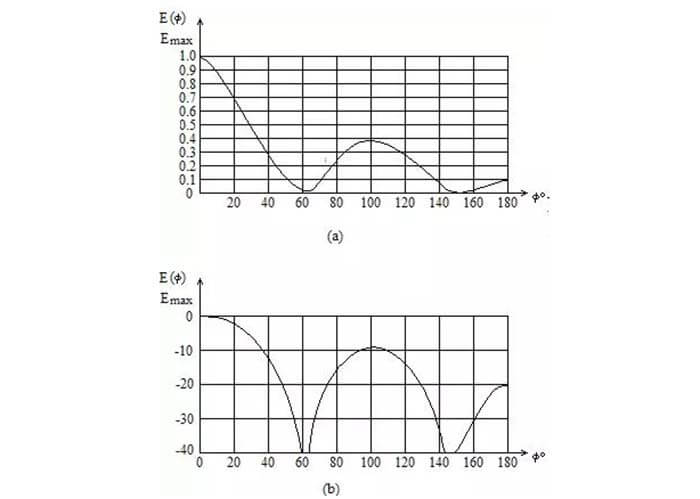The Antenna radiation pattern is also called the antenna pattern, a far-field pattern. The antenna gain cannot be obtained from the radiation pattern, but the directivity coefficient is obtained from the radiation pattern. Antenna gain = directivity factor * antenna efficiency. Therefore, it is certain that the directional coefficient is greater than the gain.
The antenna gain is mainly manifested through the test of the radiation pattern. There are many kinds of test systems for testing the pattern. That is the microwave chamber. And the result of the test in the darkroom is only a result of comparison with the ideal symmetrical vibrator. It is known that the gain of an ideal symmetrical oscillator is 2.15dB. In this way, the gain of the antenna can be calculated according to the test level.
G=D*N%.
In general, the efficiency of the antenna is not 100%, so G
Antenna gain
Antenna gain refers to the ratio of the power density of the signal generated by the actual antenna and the ideal radiating unit at the same point in space under the condition of equal input power. It quantitatively describes the degree to which an antenna concentrates the input power and radiates it.
The gain obviously has a close relationship with the antenna radiation pattern. The narrower the main lobe of the pattern, and the smaller the side lobe, the higher the gain. Antenna gain is used to measure the ability of an antenna to send and receive signals in a specific direction. It is one of the most important parameters for selecting a base station antenna.
The increase in gain mainly relies on reducing the beam width of the radiation on the vertical plane, while maintaining the omnidirectional radiation performance on the horizontal plane. The antenna gain is extremely important to the operating quality of the mobile communication system because it determines the signal level at the edge of the cell. Increasing the gain can increase the coverage of the network in a certain direction, or increase the gain margin within a certain range.
Any cellular system is a two-way process. Increasing the gain of the antenna can reduce the margin of the two-way system gain budget at the same time. In addition, the parameters representing the antenna gain are dBd and dBi. DBi is the gain relative to the point source antenna, and the radiation in each direction is uniform; dBd relative to the gain of the symmetrical array antenna is dBi=dBd+2.15.
Under the same conditions, the higher the gain, the farther the radio wave travels. Generally, the antenna gain of a GSM directional base station is 18dBi, and the omnidirectional antenna gain is 11dBi.
Characteristic parameters of the antenna radiation pattern
In order to facilitate the comparison of the pattern characteristics of various antennas, some characteristic parameters need to be specified. Mainly include main lobe width, sidelobe level, front-to-back ratio, direction coefficient, etc.
1. Main lobe width
It is a physical quantity that measures the sharpness of the antenna’s maximum radiation area. The width between the two half-power points of the main lobe of the antenna pattern is usually taken.
2. Sidelobe level
Refers to the level of the first side lobe closest to the main lobe and the highest level, generally expressed in decibels.
3. Front-to-back ratio
Refers to the ratio of the maximum radiation direction (forward) level to the opposite direction (backward) level, usually in decibels.
4. Directivity coefficient
At a certain distance from the antenna, the ratio of the radiation power flow density of the antenna in the maximum radiation direction to the radiation power flow density of an ideal non-directional antenna with the same radiation power at the same distance.
Antenna radiation pattern drawing
The antenna radiation pattern is a graph that characterizes the relationship between the antenna’s radiation characteristics (field strength amplitude, phase, polarization) and the spatial angle. The complete pattern is a three-dimensional space figure, as shown in the figure below.
It is drawn by taking the antenna phase center as the sphere center (coordinate origin) and measuring its radiation characteristics point by point on a spherical surface with a sufficiently large radius r. Measure the amplitude of the field strength to obtain the field strength pattern; measure the power to get the power pattern; measure the polarization to get the polarization pattern; measure the phase to get the phase pattern.
The surveying and mapping of the three-dimensional spatial pattern are very troublesome. In actual work, it is generally only necessary to measure the pattern of the horizontal plane and the vertical plane (that is, the XY plane and the XZ plane).

Figure 1 Coordinates of the measurement pattern
The antenna pattern can be drawn in polar coordinates or rectangular coordinates. The characteristics of the polar coordinate pattern are intuitive and simple, and the spatial distribution characteristics of the antenna radiation field strength can be directly seen from the pattern.
But when the main lobe of the antenna pattern is narrow and the sidelobe level is low, the Cartesian coordinate drawing method shows greater advantages. Because the abscissa representing the angle and the ordinate representing the radiation intensity can be arbitrarily selected, for example, even the width of the main lobe of less than 1° can be clearly expressed, but the polar coordinates cannot be drawn.
Figure 2 shows two coordinate representations of the same antenna radiation pattern.

Figure 2 Representation of the pattern (a) Polar coordinates (b) Cartesian coordinates
Generally, when drawing a directional diagram, it is normalized, that is, the radial length (polar coordinates) or the ordinate value (rectangular coordinates) is the relative field strength E(θ,φ)/Emax, where E(θ,φ) Is the field strength value in any direction, and Emax is the field strength value in the maximum radiation direction.
Therefore, the normalized maximum value is 1. For the antenna pattern of extremely low sidelobe level, most of them are expressed in decibels, and the normalized maximum value is taken as zero decibels.
Figure 3 shows the same antenna radiation pattern in rectangular coordinates with normalized field strength and decibel values.

Besides the What Is The Radiation Pattern article, you may also be interested in the below articles.
What is the difference between WIFI and WLAN?
Summary of 41 Basic Knowledge of LTE
What Is The 5G Network Slicing?
